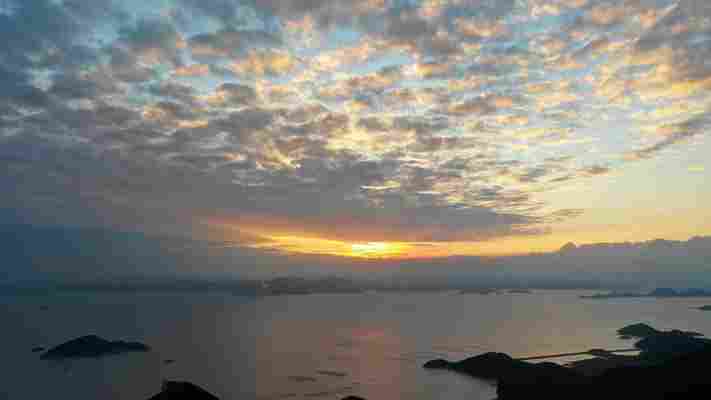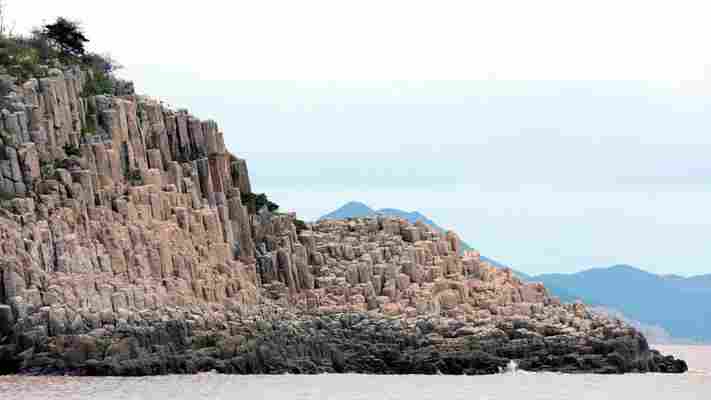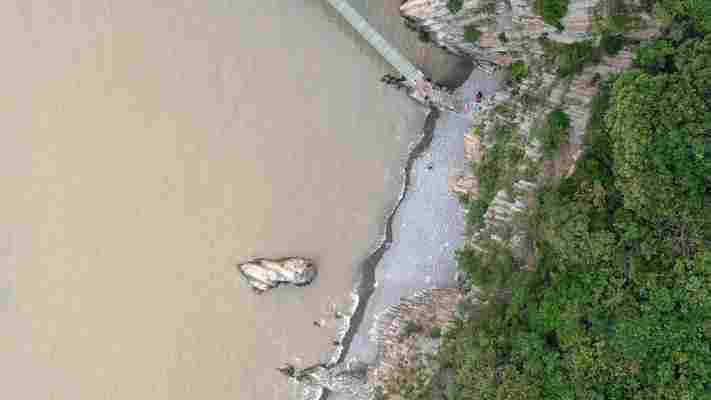

(Credit: Runze Yu)
Off the rugged coast of China’s Zhejiang province, more than 18,000 remote islands lay adrift in the East China Sea. Many are uninhabited. Others are just big enough to poke their heads above the surf. But one of them is home to a striking geological wonder that rises sharply from the sea.

(Credit: Runze Yu)
Known as Hua’ao Island or Shilin (‘stone forest’, in Chinese), this 13-sq-km islet is largely covered in a green carpet of trees. But along its jagged coasts, thousands of stacked grey and black basalt columns shoot 30m up from the water, forming an otherworldly landscape that resembles a vast volcanic pipe organ.
(Credit: Runze Yu)
Hua’ao’s rough-hewn landscape is more than 66 million years in the making, forming when volcanic lava consolidated into solid rock. Over the years, a combination of weathering and sea erosion has sculpted this basalt tuff into upright and diagonal columns with anywhere from three to seven sides.
(Credit: Runze Yu)
Because of its stone-and-sea similarities, this little-known outcrop is often compared to one of the United Kingdom’s most famous Unesco landmarks: the Giant’s Causeway . While both are defined by massive basalt columns sticking out of the sea, those on Hua’ao are in fact older, stronger and taller than the Northern Irish ‘giant’.
(Credit: Runze Yu)
While legend has it that Northern Ireland’s basalt landscape was formed by a massive giant, Hua’ao is rumoured to house tiny spirits. Many Chinese believe that small fairies inhabit caves, and since the island is home to 108 caverns and grottoes, Hua’ao is known locally as the Fairy Kingdom on the Sea.
(Credit: Runze Yu)
Although a trickle of tourists has begun arriving on the island, reaching this “fairy kingdom” is an adventure. The closest city, Ningbo, is 135km away. After driving south for nearly three hours through coastal switchbacks and across bridges, visitors arrive at the Jinyu Wharf, where a ferry carries them to the island.
(Credit: Runze Yu)
More than 1,000 people live on Hua’ao Island, most of whom are fishermen or crab and shrimp farmers. Ten years ago, the local government started promoting the craggy coastal area as a ‘scenic geological park’. Today, Hua’ao has three hotels, and many residents have turned their spare rooms into guest quarters.
(Credit: Runze Yu)
“I was amazed to see the stone forest when I first came here. But when you live here and see it every day, it just becomes part of your life," said Hua’ao Island resident Yang Huang, who moved here after marrying an islander 10 years ago and has since opened a hotel.
(Credit: Runze Yu)
In addition to the photographers who come to marvel at the stone forest, many hikers now descend on Hua’ao Island to trek several hours to the top of Great Buddha Mountain – so named because of its shape when looking up from a bridge visitors must pass to reach the ferry.
(Credit: Runze Yu)
To accommodate the residents and growing trickle of visitors, the government finally paved the island’s one road last year. But Hua’ao’s colossal columns remain a little-known natural wonder untouched by man. Built by lava, guarded by spirits and sculpted by wind and water, this surreal stone forest has a life of its own, and continues to evolve over time.
World of Wonder is a BBC Travel series exploring some of the most awe-inspiring natural phenomena and manmade marvels around the globe.
Leave a Comment